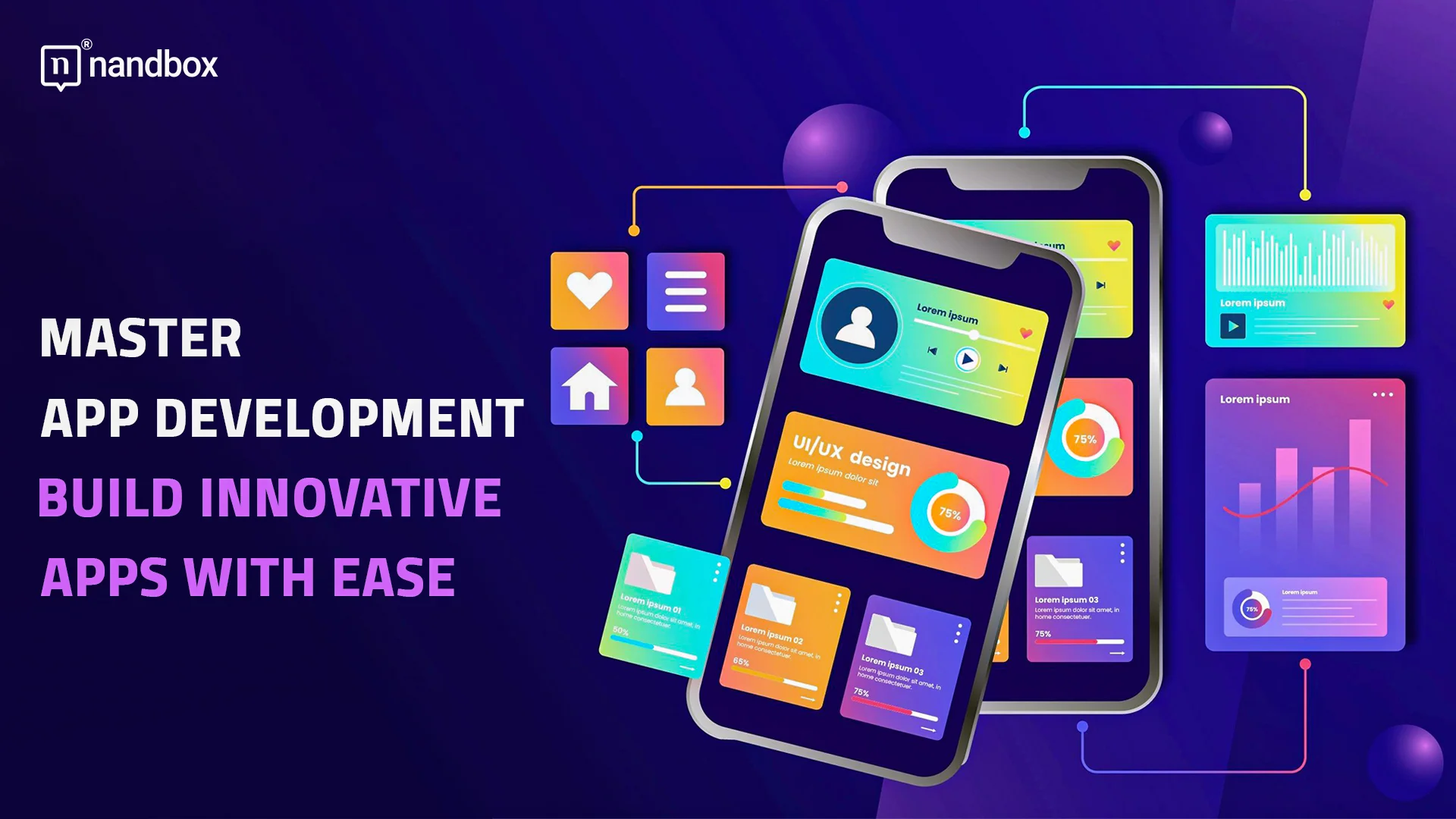Did you know that about three-quarters of companies seek to invest in app development or web applications? Nearly 75% of organizations plan to build ten or more apps in the next few years. That is because these apps prove beneficial to employees, customers, and other stakeholders. They can also contribute to their business scalability, growth, and success. Now, this begs the most crucial question: Are you one of these businesses making significant investments? If yes, this page tackles what you need to know about corporate app development. Read on to learn how you can develop robust software applications for your company or organization.
What Is Corporate App Development?
Corporate app development involves designing, building, maintaining, and optimizing digital applications (whether mobile or web app) specifically created for companies or organizations. Apps are usually designed to solve business challenges and improve business processes. The ultimate goal is to empower internal employees, enhance customer engagement, and achieve overall success. It’s now imperative for companies and organizations to invest in these digital tools and technologies. In fact, The global app development software market is projected to reach $195.80 billion in 2025 and expand at a 6.30% compound annual growth rate (CAGR). As a business leader, it’s great to come up with an idea for an app. Imagine how this tech can streamline operations and empower stakeholders. For example, if you’re struggling to manage your customer information, consider creating a unified app for data management—all in one place! Discover the critical elements to consider for developing apps successfully below.
Key Elements for Successful Corporate App Development
Successful corporate app development involves more than advanced features and core functionalities. It’s about possessing the components needed to achieve business goals and solve problems. So, what makes a solid app for a company or organization?
That said, here are the key elements to consider:
- User-centric application design: Robust software apps empower the end users. Do they help employees in their day-to-day functions? Do they improve the customer experience (CX)? These apps are not only for aesthetic purposes but also for user functionalities for improved operations.
- Guaranteed scalability and performance: It’s no secret how low and no-code apps empower businesses in the digital age. Not only do they scale your business up and down, but they can also boost your overall performance. Ultimately, they lead to your business growth and success!
- Full security and compliance: Cybersecurity has become a growing concern, given the prevalence of cyberattacks like password, phishing, and Denial of Service (DoS) attacks. Since software apps can be particularly vulnerable, a robust corporate app development ensures 100% network security and regulatory compliance.
Learn how to implement a successful corporate app development in the next section.
How To Build a Corporate App That Works
Corporate app development is now crucial in today’s business landscape. Companies and organizations should invest in digital tools and modern technologies and create apps that make the lives of their stakeholders more efficient and convenient. But how do you go about doing that? Enter the low-code or no-code app development, allowing you to build web or mobile applications with zero-to-minimal coding. Low-code platforms use pre-built templates and drag-and-drop tools via graphic user interfaces (GUIs). Meanwhile, no-code tools do the same but require no coding at all. According to the Growth Markets Report, the global no-code development market could grow from $14.9 billion in 2022 to $102.7 billion by 2031 at a 24.1%CAGR. Meanwhile, Grand View Research predicts the worldwide low-code market revenue to hit $35.22 billion by 2030 at a 22.9% CAGR According to Gartner, low-code and no-code (LCNC) platforms accounted for nearly 65% of all app development last year—what more in 2025? With these tools in place, you can kickstart your corporate app development. However, doing so requires critical planning, careful execution, and constant updates.
That said, follow the crucial steps below:
1. Get Clear on What you Need
When developing an app for your company, start by understanding your business needs. You probably plan to automate your processes for work efficiency, create a unified platform for customer interactions, or leverage AI for data analysis and business reporting—a software app can help!
That said, here’s what you need to do:
- Set your goals: What do you want the app to do? Your goal might be to streamline operations, empower employees, or enhance the CX. Of course, the app development objectives stem from your business needs.
- Know your audience: Who’s using it, and what do they need? End users can be your employees accomplishing their day-to-day tasks or customers doing business with you. Even external vendors or third-party service providers can be your target users.
- Focus on essentials: What features are non-negotiable? Consider the app’s core features and functionalities by aligning your solutions with business needs. Remember, prioritize what matters the most for your company or organization.
Dr. Mo Ziaei, Cornea & Vision Correction Specialist at Re:Vision, emphasizes the importance of goal-setting and user analysis for corporate app development. Their clinic also invests in software apps for patient management; however, they ensure that app solutions match user needs. Ziaei says, “Defining clear goals and understanding your users is non-negotiable in app development. Without this foundation, you risk creating a solution that doesn’t solve the right problems. Prioritize precision and alignment from the outset.”
2. Pick the Right Development Approach
After the research and planning stages, it’s time to develop your corporate app. However, this entails choosing the right development approach. Whether using leading app development platforms or no-code app creation tools, ensure your approach meets your goals and needs.
Below are some of your app development options:
- In-house vs. outsource: You can either create a tech team dedicated to developing apps or work with a third-party service provider. Decide what fits your team based on your business size, budget, and needs!
- Native vs. cross-platform: You have the option to target one platform for optimal performance, or leverage one codebase for multiple platforms. Choose what works best for your app depending on your business structure and technological integration!
- Stay flexible: Agile development is a flexible, team-focused method that delivers software in minor, quick updates. What better way to keep things on track than to use the agile method? It’s one of the most popular yet effective app development solutions!
Maryanne Fiedler, Director of Marketing at Psychic Source, recommends sitting down and brainstorming on the right app development solution. They also have their own exclusive app designed for psychic readings for their much-valued clients, as shown below:
Fiedler explains, “Before jumping into app development, take the time to sit down and brainstorm the best solution for your needs. Whether in-house or outsourced, native or cross-platform, finding the right fit requires careful thought. Don’t rush—align your approach with your goals to set yourself up for success.”
3. Test, Launch, and Maintain your App
Finally, you’ve reached the last step—testing, deploying, and updating your app after the development process. The goal is to ensure that your corporate app looks and works perfectly fine before and after its development. However, these steps are easier said than done.
That said, here are the crucial steps to take:
- Test it well: Fix bugs before going live. Employ methods such as functionality, usability, performance, security, and compatibility testing to ensure the app looks and works perfectly before the actual launch.
- Roll it out: Deploy and integrate seamlessly. Not only should you make your app live and accessible to users, but you also have to ensure it syncs with other tools and platforms. With these in place, your users can now start using the app!
- Stay up-to-date: Keep improving with regular updates. Understand that apps also need regular updates and fixes if needed. Your dedicated IT/tech support team should always stay on top of the regular upkeep!
Murtaza Oklu, Owner of OMO Transfer, suggests undergoing robust app testing, integration, and maintenance. The company has these three components in mind as it plans to launch an app for its DTF transfer business. Oklu suggests, “Testing, deployment, and ongoing maintenance are key to a successful app. Ensure you thoroughly test the app to catch any issues before launch, seamlessly integrate it with other tools, and keep it updated for long-term success. Continuous improvement is what keeps your app running smoothly.”
Final Words
Corporate app development has become imperative in today’s digital business landscape. It ensures a user-centric design, scalability and performance, as well as security and compliance. Ultimately, it translates to streamlined operations, improved stakeholder engagements, and overall business success! That said, follow the crucial steps above—from understanding business needs to choosing the right development approach to deploying and maintaining the app. With all these practical tips and steps, you can establish robust corporate apps for the good of your business—and all stakeholders involved! Building a mobile app for your company or organization? nandbox provides native mobile app software with core features and advanced functionalities for various industries. Get started with us today with a seven-day free trial!





